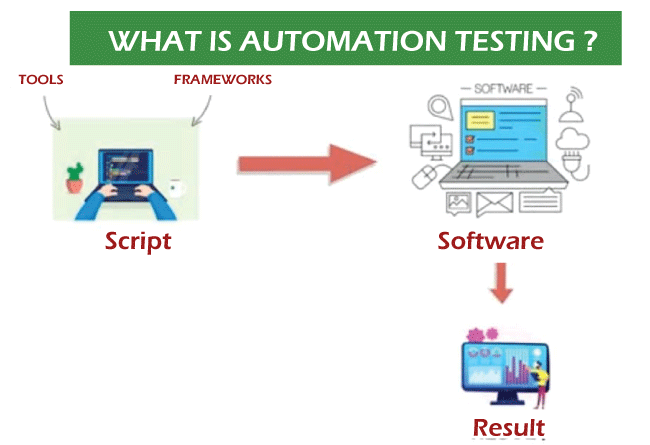Automation Testing Structures: Simplifying Complicated Testing Situations
Automation Testing Structures: Simplifying Complicated Testing Situations
Blog Article
Guaranteeing Success in Automation Examining: Key Metrics, Challenges, and Solutions Every QA Team Should Know
In the world of software application top quality assurance, the landscape of automation testing is ever-evolving, demanding a meticulous approach to make sure seamless operations. The journey to mastering automation screening is led with subtleties that call for an eager eye for monitoring, evaluation, and continuous improvement. As the market drives onward, the pursuit for optimum efficiency in automation testing stays a continuous search, prompting QA groups to furnish themselves with the understanding and strategies necessary for triumph.
Value of Trick Metrics
Understanding the importance of crucial metrics is necessary for assessing the efficiency and effectiveness of automation testing processes. Secret metrics offer as measurable measures that give important understandings right into different aspects of the testing process, such as examination coverage, examination execution time, problem density, and test instance efficiency. By evaluating these metrics, QA teams can identify traffic jams, ineffectiveness, and areas for renovation within their automation testing structure.
One critical element of vital metrics is their ability to track progress and keep track of the total health and wellness of the testing process (automation testing). They make it possible for stakeholders to make informed choices based on data-driven insights, which can bring about much more reliable testing approaches and far better source allotment. Additionally, crucial metrics can help teams established realistic goals, determine the success of automation campaigns, and demonstrate the ROI of automation testing initiatives

Common Challenges Encountered
Difficulties frequently encountered in automation testing procedures can substantially affect the overall efficiency and performance of QA teams. One of the significant obstacles is the option of the best test situations for automation. Not all test instances appropriate for automation, and choosing the incorrect ones can result in lost time and sources. Additionally, keeping test manuscripts can be a daunting job, especially as the application undertakes constant modifications. Examination script maintenance needs constant updates and adjustments to guarantee they show the current capability precisely. Another typical challenge is the first investment required for establishing automation structures and tools. This can be an obstacle for some organizations, especially smaller sized ones with limited budgets. Automation screening might not cover all elements of screening, such as usability and customer experience testing, which still need hand-operated intervention. Conquering these difficulties requires proper planning, tactical test case selection, robust maintenance processes, appropriate resources, and a clear understanding of the constraints of automation testing.
Effective Solutions for Challenges
To deal with the obstacles run into in automation testing, applying efficient options is crucial for boosting the performance and performance of QA groups. One essential service is to buy durable training programs for QA groups to guarantee they have the required skills to properly use automation tools. Training can link expertise spaces, improve understanding of automation structures, and improve scripting abilities, eventually causing much more efficient test production and implementation.
One more vital remedy is to develop clear communication channels within the QA team and with various other stakeholders, such as designers and project supervisors. Efficient communication helps in aligning assumptions, sharing progression updates, and promptly dealing with problems or obstructions that might develop during the automation screening process.

Tracking and Analysis Techniques
Carrying out reliable surveillance and analysis strategies is essential for making certain the success and effectiveness of automation testing procedures. Additionally, examining examination outcomes and metrics provides important understandings right into the top quality of the software being evaluated and the efficiency of the testing approach.
One key method in tracking and analysis is using dashboards that combine appropriate metrics and KPIs in an aesthetically available layout. These control panels use a detailed summary of test implementation standing, examination coverage, problem patterns, and various other critical information. Consistently reviewing and evaluating these control panels can aid QA groups make informed decisions, focus on jobs, and optimize testing initiatives.
Furthermore, executing automated signals and notifications based on predefined limits can enhance proactive monitoring and timely treatment. By establishing up alerts for performance variances or examination failings, groups can resolve problems immediately and prevent them from intensifying. Overall, monitoring and analysis methods play a crucial role in ensuring the effectiveness and success of automation testing initiatives.
Constant Renovation Strategies
Enhancing the effectiveness of automation screening procedures demands the regular improvement of methods and approaches. Continuous improvement techniques are crucial for QA groups to adjust to advancing technologies and provide high-grade software. One key technique to boosting automation screening procedures is to conduct routine evaluations and retrospectives. By analyzing past testing cycles, teams can identify bottlenecks, ineffectiveness, and locations for improvement. Applying YOURURL.com responses loopholes and integrating lessons learned into future testing frameworks can yield significant renovations with time.

Conclusion
To conclude, it is crucial for QA groups to comprehend the key metrics, obstacles, and services in automation testing to make certain success. By meticulously checking and assessing data, implementing reliable services to usual difficulties, and continually enhancing strategies, QA teams can optimize their screening processes and provide top quality software program products. Complying with these methods will inevitably result in extra effective and reliable automation screening methods.
By analyzing these metrics, QA teams can recognize bottlenecks, inadequacies, and areas for renovation within their automation screening structure.
Additionally, vital metrics can help teams established realistic goals, gauge the success of automation efforts, and show the ROI of automation testing initiatives.
Difficulties typically come across in automation screening procedures can considerably affect the total effectiveness and performance of QA teams. Automation testing might not cover all facets of testing, such as functionality and individual experience screening, which still call for manual intervention.In verdict, it is essential for QA groups to recognize the key metrics, challenges, and solutions in automation testing to guarantee success.
Report this page